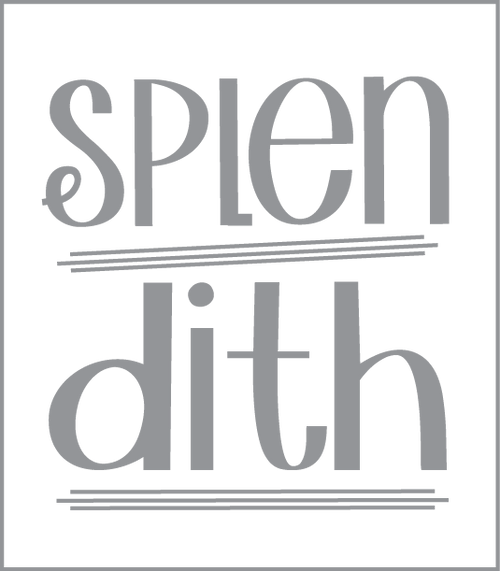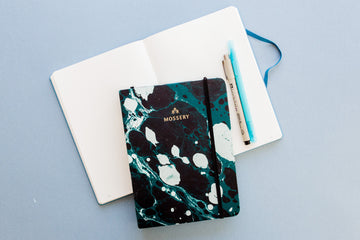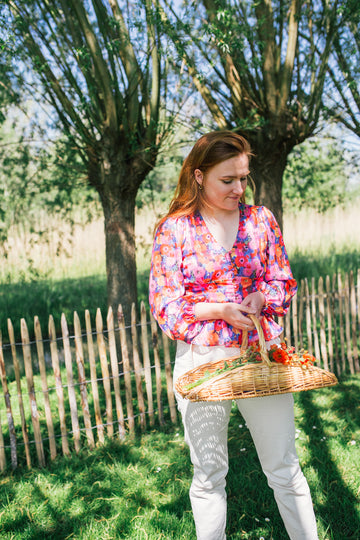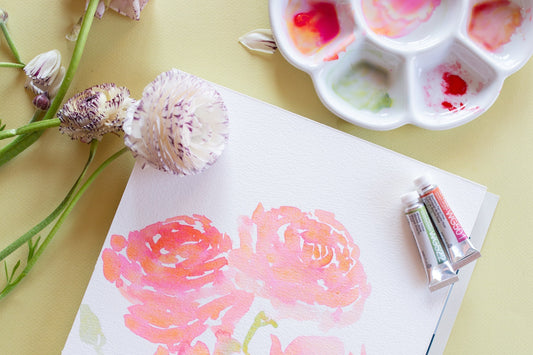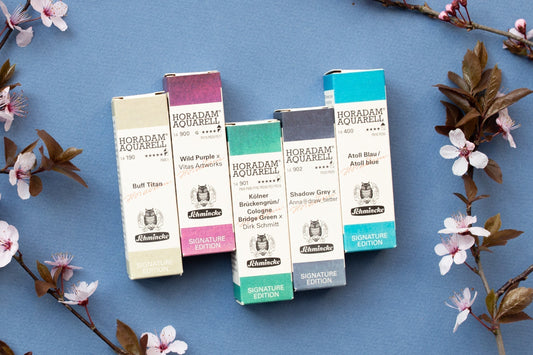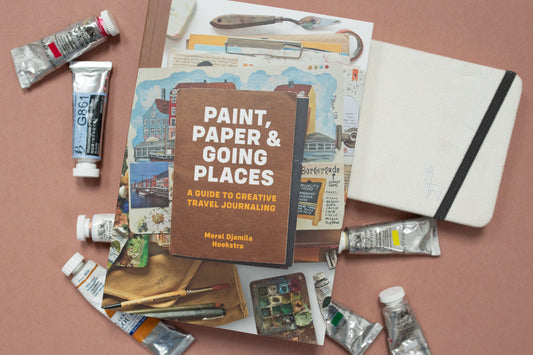For a year, I plan my tasks in my bullet journal. For a long time, I only had my digital calendar. An offline calendar was outdated, I thought. One place for all your appointments, that's more than enough, right? What I didn't have was a nice spot for to-do lists. Those I made on separate notes and you could find them all over my office. For every different subject, I had a different notebook. And guess what?! I never had the right notebook with me when I wanted to look for something. The system wasn't ideal.
I had a big desk calendar, that was big. On the left, I had my appointments, on the right I had space for notes per week. That meant that I chronically had too little space. Which lead me to get a notebook for every subject, again. It was fun, but not very handy. Especially when you have to carry them around everywhere.
When the desk calendar was full, I thought: I'm going to try a Bullet Journal. I saw so many cute layouts on Pinterest and Youtube. With those beautiful pages in mind, I quickly started. Unfortunately, you'll be disappointed pretty fast, those pages take at least 30 minutes to make. Quite hindering when you want to use your journal to plan your days and create time. It should save some time, right?
That's why I decided to look at it differently. I started a Bullet Journal only for the week planning. And I only use a fine liner. Nothing more. Well, it's super personal how you want to fill in your journal. Make sure to learn the basics and create your style! In this blog, I'll dig a little deeper into the initial idea of the Bullet Journal. It doesn't mean that you have to do it this way. But it can help you to create your ideal journal.
Do you just want to get creative? No worries, there will be blogs online about that. Here you'll read about the basics.
What will you read in this blog?
- Why is it called a Bullet Journal?
- Why would you use a Bullet Journal?
- The Bullet Journal system
- Which different Bullet Journals are there?
- What do you have to keep in mind when buying a journal?
- Do it your way!
Why is it called a Bullet Journal?
In a Bullet Journal, you write everything down according to 'bullet points'. You don't write it like an essay, but you summarize all the information. The bullets are short sentences, that you combine with a symbol. With these symbols, you'll visualize the different categories.
Why would you use a Bullet Journal?
A Bullet Journal is used to have a system with the planning of your days, weeks, months. You can combine these in a way that it perfectly suits you. Instead of a mountain of different notebooks, your Bullet Journal is just one notebook to combine everything in.
The Bullet Journal is designed to plan in a set system. This way it should be productive.
The base of a Bullet Journal is really simple, it doesn't have to look fancy or unique. If it makes your day more productive, it is okay.
The Bullet Journal system
The creator Ryder Carroll made up some basic principals. This way you can make your days and 'logs' even more productive. Ryder uses a standard layout for his journal. This layout starts with an index and a future log followed by a monthly and a daily log. Here you'll find a short explanation about these categories.
Index
Firstly, you create your index. You can make an index about all the pages that you make. This mainly works when you write pages that you want to keep up with over the months, now you can easily find them again. You don't have to make separate categories in your journal and save pages to keep the information together. In some journals, the index page is already set up. If not, you normally use the first two pages.
Future log
In a future log, you can make an overview of the entire year. Appointments, launches, or tasks that you have to do in a couple of months? Here you can write them down easily.
Optional: Separate two spreads in six boxes. These can be easily divided over the twelve months.

Monthly log
Here you'll write the name of the month. Underneath is a list with all the days of the month, sometimes combined with the letter of the day. Get your agenda from your phone and write down all your important appointments. Minimize your text and describe them as short as possible.
Monthly task
Not only can you make a monthly log, but the page next to it you can make a list of tasks for the upcoming months. Of course, you're free to do so. You could also make a list of your goals for that month.
The daily log
A daily log is not only a to-do list that you make every day. It's a 'log' for a reason. See it as a list of things that you want to accomplish that day. Of course, there will be to-do's, but maybe you thought of something unique with a to-do. For example, when you write down a to-do, like administration. When you work on your administration, you notice that you made a really good profit. Add it to your log! It becomes like a diary from special moments and productivity.
Collections
Collections are also called Trackers. On these pages, you can keep up with things like books that you still want to read, which shows you want to watch, or a wishlist for your birthday.
Threading
The goal of your index in your Bullet Journal is that you don't have to save space for specific categories. It's possible that you get short on space and that the next page is already filled. Easy fix, just start on a new page, later in jour journal. Go back to the index and add the page number where your collection continues.
Migrations
Migration is a pretty important part of a Bullet Journal. At the end of a month, you walk through all the tasks that have been finished and the ones that aren't yet. The ideal moment to still finish some tasks, or migrate them to the next month. This way they won't 'float' in your journal for over a year.
Symbols as designation
When you fill in your page, use the following symbols:
- A dot: tasks, stuff that you need to do
- A - : notes, things you don't want to forget
- A O: events, moments that you need to jot down.
- A !: priority, things that need to be finished first
- A : inspiration
When you finished a task, cross the dot. You can also add it to a future log, to plan it later on, or add it to another task. Crossing out the task is also an option, it isn't relevant anymore. You can also make up your symbols to accentuate your notes.
When you want to start, you'll need a journal. But which one do you choose?
What kind of journal do you need?
At the moment you can find Bullet Journals everywhere. From the HEMA to the most known Leuchtturm or Nuuna Bullet Journals. It's nice to start off with the right journal, one that fits your budget and your needs. In the shop, there's a good selection of great journals, that are really good in quality.
A short summarization of the journals
Leuchtturm is one of the most popular journals on the market. These journals are good when you only want to use fineliners. The paper is very thin, which makes them less suitable for the usage of brushpens or other materials. The Nuuna and Mossery journals both have better and thicker paper. You can use different markers and even a bit of watercolor. Then we have Archer & Olive, which is my personal favorite. Because of their thick pages you can use almost every medium you want and there's no ghosting or bleeding. They are a little bit more expensive, but in my opinion, it's totally worth it.
A final note: personalize your bullet journal
Ryder made up some markers to highlight special things. You can use a * when something is important or a <3 for a special moment. You don't only have to use drawings when you want to personalize your journal. Focus on designing it the way you'd like to use it.
The journal has to serve you, instead of you being busy with following the 'rules'. Change the 'rules' and make a layout that perfectly suits you!
Love,
Judith
